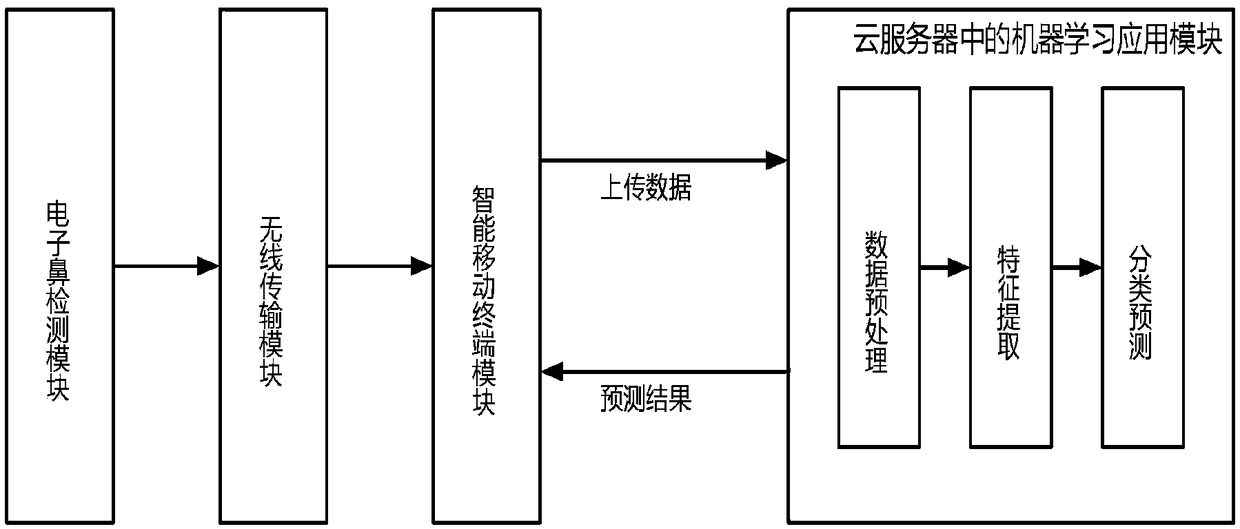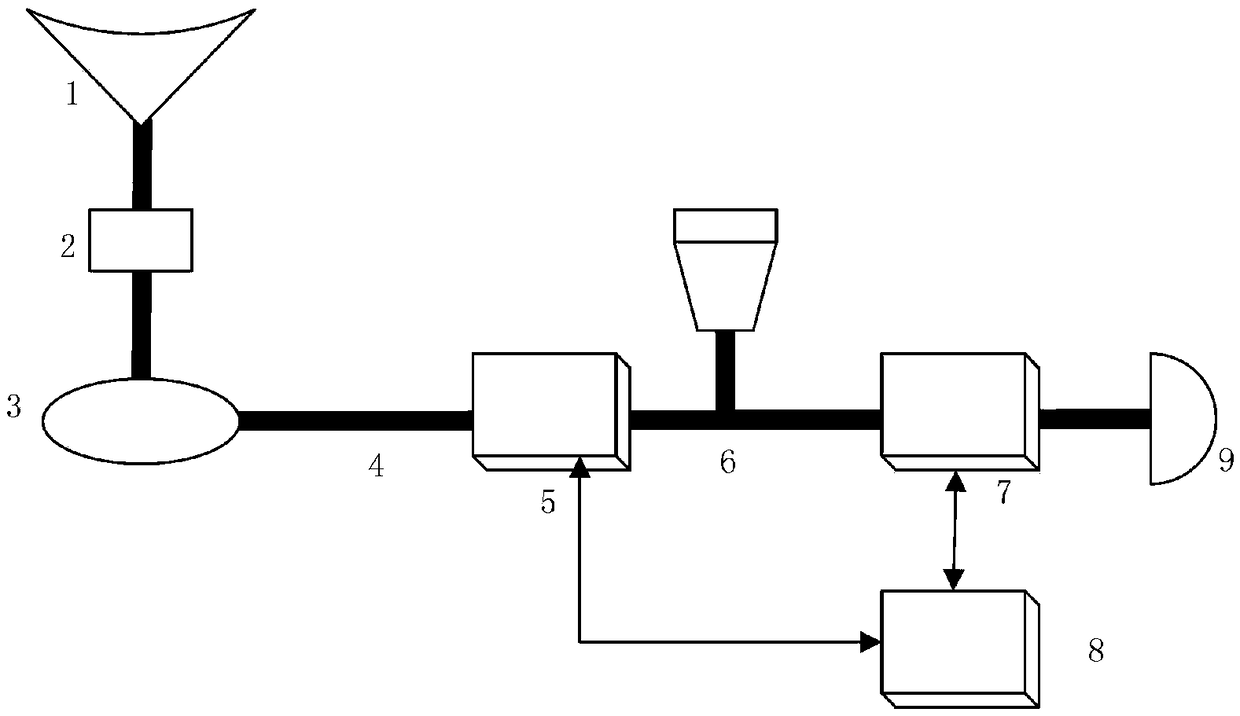Remote diabetes intelligent diagnosis system based on electronic nose for detecting respiratory gas
An intelligent diagnosis and breathing gas technology, applied in the field of disease diagnosis, can solve problems such as raising the user threshold, wasting hardware resources, increasing user costs, etc., to achieve the effect of improving diagnosis accuracy, meeting storage requirements, and accurate diagnosis results
- Summary
- Abstract
- Description
- Claims
- Application Information
AI Technical Summary
Problems solved by technology
Method used
Image
Examples
Embodiment Construction
[0021] The specific implementation of the present invention will be described in detail below. This description is only an example and will not limit the scope of use and application of the invention.
[0022] refer to Figure 1 to Figure 3 , an embodiment mainly includes the following steps: the first step is to collect the user’s exhaled gas through the respiratory gas collection module. It is recommended that the user first rinse the mouth with water for 3-5 times and take a deep breath for 2-3 times, and then the user exhales into the sampling bag, Tighten the sampling bag after filling. The air bag can be a Tedlar air bag with a fixed capacity, and the storage time is preferably no more than 12 hours. In this step, the user completes the quantitative collection of exhaled gas. In the second step, open the multifunctional solenoid valve and the gas sampling pump of the exhalation component enrichment module, and pass the ambient air into the gas reaction chamber through t...
PUM
 Login to View More
Login to View More Abstract
Description
Claims
Application Information
 Login to View More
Login to View More - R&D
- Intellectual Property
- Life Sciences
- Materials
- Tech Scout
- Unparalleled Data Quality
- Higher Quality Content
- 60% Fewer Hallucinations
Browse by: Latest US Patents, China's latest patents, Technical Efficacy Thesaurus, Application Domain, Technology Topic, Popular Technical Reports.
© 2025 PatSnap. All rights reserved.Legal|Privacy policy|Modern Slavery Act Transparency Statement|Sitemap|About US| Contact US: help@patsnap.com



